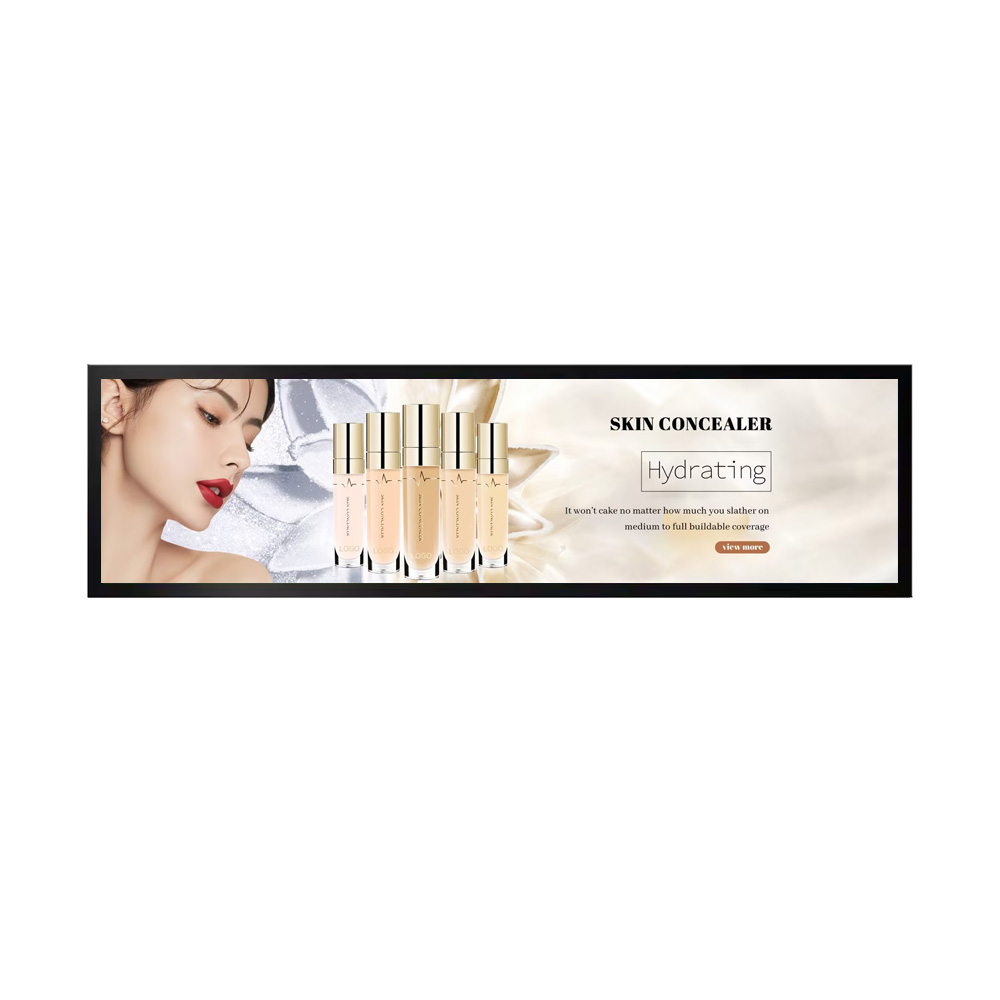32-Inch 2560×1440 C-Shape Curved LCD Module: Evolving Display Design for Modern Gaming Machines and Slot Cabinets
Display technology continues to influence the development of gaming machines and slot cabinets, particularly as the industry moves toward more immersive and visually engaging interfaces. The 32-inch 2560×1440 C-shape curved LCD module is an example of how commercial display engineering is adapting to the expectations of today’s gaming environments. Designed with a pronounced curvature, high resolution, and commercial-grade stability, it meets the demands of equipment that operates continuously and must attract attention in crowded entertainment spaces.
The following article provides an overview of the module’s characteristics, its functional advantages for gaming applications, and the trends shaping its adoption. The tone is informational, suitable for a website news page, and avoids promotional language.
Technical Profile of the 32-Inch Curved LCD Module
This curved LCD module offers a 2560×1440 (QHD) resolution across a 31.5-inch display area. Its active display region measures 697.344 × 392.256 mm, while the total panel outline remains compact at 725.8 × 426.24 × 20.5 mm, supporting integration into modern gaming cabinets and slot machine enclosures.
A defining characteristic of this module is its R1000 curvature, a shape intentionally aligned with the natural human viewing angle. This curvature creates the “C-shape” structure that distinguishes the panel from flat commercial displays. It is particularly effective in gaming environments where users are positioned close to the screen for extended periods.
Display specifications are designed for visual clarity and durability. The module provides a 3500:1 typical contrast ratio, 500 cd/m² brightness for indoor gaming halls, and 1.07 billion colors through an 8-bit + FRC architecture. Viewing angles of 89° in all directions ensure that graphics remain consistent even when viewed from the sides—a common viewing condition in arcades and casinos. The electrical interface uses a 4-lane eDP connector, which is standard across many commercial display control systems.
Because this is a commercial LCD module, the construction prioritizes operational reliability, structural rigidity, and uniform illumination. Gaming environments require displays that can run continuously and withstand the heat and vibration present in arcade cabinets and slot machines. This type of panel, supplied by an LCD module manufacturer familiar with gaming-sector requirements, is engineered with those demands in mind.
Why Curved Displays Are Becoming Standard in Gaming Equipment
The rise of curved LCD modules in gaming machines and slot cabinets is not merely aesthetic. The curved form factor addresses user experience, ergonomics, visual immersion, and game presentation.
One of the most significant advantages of a curved display is the immersive effect created by its shape. Slot machines and gaming cabinets rely heavily on animated graphics, spinning reels, dynamic lighting, and layered motion effects. Curvature brings the edges of the screen closer to the user, increasing perceived depth and helping visual elements feel more enveloping.
Ergonomics also play a meaningful role. In casino environments, players may spend long periods seated in front of machines. Flat screens introduce variation in focal distance between the center and edges of the display. A curved panel reduces this variation, which can contribute to greater viewing comfort over time.
A curved LCD module additionally enhances the appearance of the cabinet itself. Gaming venues are visually dense environments filled with competing machines, and designers increasingly rely on display form factors to differentiate their equipment. The C-shape curvature creates a premium aesthetic and aligns with the industry’s transition toward futuristic cabinet designs.
Visual performance is further amplified by the curved form. Effects placed along the edges of the display—flashes, motion streaks, peripheral animations—become more noticeable when wrapped toward the player's natural field of vision. This is particularly relevant in modern slot games that rely on full-screen visual transitions and thematic artwork.
Application in Slot Machines and Gaming Cabinets
Slot machines represent one of the primary application areas for this curved LCD module. The display is the main point of interaction between the player and the game, hosting animated reels, score indicators, themed environments, and bonus-round effects. Higher resolution and color depth enhance the clarity of symbols and graphics, making the overall experience more dynamic.
Arcade cabinets also benefit from the panel’s wide viewing angles and brightness. These environments often involve multiple simultaneous players or spectators standing beside the primary user. The consistent image quality across viewing angles helps maintain the intended visual presentation even when the display is observed from side positions.
Electronic gaming tables and casino kiosks form another application category. These systems sometimes incorporate multiple displays at various angles. A curved LCD module can be used to create an immersive “console-like” interface that guides the player’s attention toward key information. The panel’s QHD resolution supports crisp typography and detailed animations needed for instructional overlays, gaming menus, and virtual table layouts.
Because gaming environments operate continuously, the reliability of the display becomes a strategic concern. Commercial LCD modules are constructed for long service cycles and consistent brightness over extended operational hours. This reliability allows gaming operators to avoid costly downtime and maintain a stable user experience for players.
Integration Considerations for Manufacturers
The curved form factor introduces unique integration requirements for gaming equipment developers. Cabinet structures must be designed to accommodate the R1000 curvature, ensuring that the mounting frame supports the panel without applying uneven pressure. Enclosures typically require reinforced brackets and a back-panel contour matched to the curvature.
Thermal performance is another consideration. Gaming machines are often installed in rows, surrounded by other equipment and various heat sources. Adequate airflow and heat dissipation are essential for preserving display uniformity and preventing premature backlight degradation.
Compatibility with controller boards is typically straightforward due to the 4-lane eDP interface. Developers can integrate standard eDP driver boards while still maintaining flexibility for custom firmware adjustments—such as brightness curves, color profiles, or synchronization with game logic.
Many gaming cabinets incorporate protective cover glass or touch surfaces. Optical bonding is frequently used to fuse the module with the cover layer, improving impact resistance and reducing internal reflections. This ensures that visuals remain clear under casino lighting conditions, which often include bright accent lighting and reflective surfaces.
Market Trends Supporting the Adoption of Curved Modules
The gaming equipment industry continues to favor display formats that elevate visual engagement. Curved modules are increasingly seen not as a stylistic flourish but as a functional enhancement that supports immersive gameplay.
The trend toward higher resolution is evident across new slot-machine designs. QHD panels provide additional pixel density that improves clarity in both animated and static elements. Game art has become more detailed, with modern titles relying on multi-layer compositions, atmospheric backgrounds, and fluid motion graphics. These art styles benefit from the contrast and color performance of panels engineered for commercial environments.
There is also a broader shift toward cabinets that offer distinctive form factors. Curved displays allow manufacturers to move beyond rectangular enclosures and build equipment with more sculpted or visually expressive front panels. As more casinos introduce themed zones and visually coordinated machine groups, such flexibility becomes strategically important.
Finally, commercial reliability remains a major purchasing factor. Operators require displays that can maintain consistent brightness and color performance over thousands of operational hours. This is why gaming OEMs often select panels from an LCD module manufacturer that specializes in long-life backlight systems and industrial-grade construction.
Conclusion
As gaming machines and slot cabinets evolve, display technology has become one of the defining elements of user engagement and cabinet design. The 32-inch 2560×1440 C-shape curved LCD module demonstrates how curved visual interfaces contribute to immersive gameplay, ergonomic comfort, and distinctive cabinet aesthetics. With its commercial-grade build and compatibility with gaming-oriented enclosures, it reflects the direction in which gaming hardware continues to move.
Contact for Project Consultation
If you are planning a gaming cabinet, slot machine, or commercial gaming system and require a curved LCD module or a customized commercial LCD module solution, our engineering team can provide technical guidance, drawings, and manufacturing support.
 2025-11-11105 Inch 5K CTP Touch All-in-One Machine for Indoor Digital Signage
2025-11-11105 Inch 5K CTP Touch All-in-One Machine for Indoor Digital Signage 2025-11-04Commercial Display Market Trends and the Growing Demand for LCD Modules
2025-11-04Commercial Display Market Trends and the Growing Demand for LCD Modules 2025-10-2928.6″ Bar LCD Display – Industrial Commercial Signage
2025-10-2928.6″ Bar LCD Display – Industrial Commercial Signage 2025-10-1518.5 Inch Wide Temperature Outdoor LCD Display — Tailored Display Solutions for Outdoor Advertising
2025-10-1518.5 Inch Wide Temperature Outdoor LCD Display — Tailored Display Solutions for Outdoor Advertising 2025-10-1523.1 Inch Bar LCD Display for Supermarket Shelf Solutions
2025-10-1523.1 Inch Bar LCD Display for Supermarket Shelf Solutions

-
Inquire
- Top


